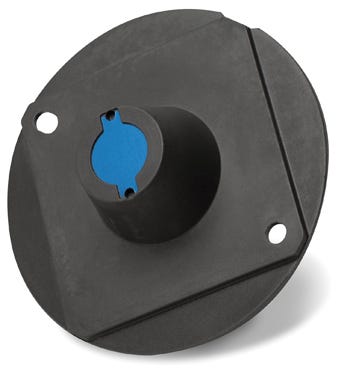Lead's time in medical devices is quickly running out and opportunistic plastics suppliers are jumping into the void being left by out-of-favor toxic metal to offer polymer compounds that offer equivalent radiation shielding."There's a move afoot to try and remove [lead] from the manufacturing environment because its hazardous to employees and difficult to dispose of," PolyOne's Larry Johnson said. "There are costs and concerns associated with it, so all and all it's kind of a bad actor, and people are trying to remove it."
June 8, 2011
Lead's time in medical devices is quickly running out and opportunistic plastics suppliers are jumping into the void being left by out-of-favor toxic metal to offer polymer compounds that offer equivalent radiation shielding.
"There's a move afoot to try and remove [lead] from the manufacturing environment because its hazardous to employees and difficult to dispose of," PolyOne's Larry Johnson said. "There are costs and concerns associated with it, so all and all it's kind of a bad actor, and people are trying to remove it."
When the RoHS directive went into effect in 2006, medical devices (placed in Category 8) were given a temporary exemption from lead restrictions due mostly to a lack of suitable replacements. This exemption is expected to expire as early as 2012, however, and exacerbating the matter further is the fact that China has announced its intention to follow the EU directive in its own
Siemens CT Scanner |
Siemens Somatom Definition CT scanner under construction in Germany. |
PolyOne Trilliant compound |
A CT scanner component injection molded from PolyOne's Trilliant radiation shielding compound. |
SABIC LNP compound |
SABIC's LNP Thermocomp compound is being utilized in collimators. |
regulation.
Johnson, global healthcare marketing director for PolyOne Corp., told PlasticsToday that his company recently completed its second lead-replacement project in a CT (computed tomography) scanner, working with Siemens Healthcare to develop non-lead radiation shielding components for that company's newest CT line.
The companies were able to produce components with radiation shielding performance equal to lead while eliminating machining and reducing shielding costs compared to traditional machined metal and lead parts. The components were injection molded from PolyOne's Trilliant Healthcare Radiation Shielding Compound by German injection molding company, Reiter-HG Geiger, with the Material Technology team at Siemens Healthcare interested in staying ahead of any potential RoHS regulatory ban on lead.
PolyOne said that in the field, the compound would have to effectively shield X-rays up to 140 keV. To meet this and other requirements, it put forward a high-density metallic-filled polymer, based on its Gravi-Tech technology. Siemens undertook material evaluation of the compound, which ultimately demonstrated that the Trilliant blocked radiation at levels equal to those of pure lead, and thanks to good dispersion of metallic filler within the resin, the compound also avoided "hot spots" where radiation could leak out.
Two different application areas were targeted within the scanner, including a PCB (Printed Circuit Board) controller unit, and shielding plates for various electronic components linked to each of the detector elements.
To protect sensitive electronic components from degradation due to X-ray exposure during a CT scan, shielding elements are necessary, and traditionally, designs have utilized machined or cast lead.
According to Johnson, Siemens is not the only company to proactively target the material, keeping PolyOne's Trilliant team very busy. "[Lead replacement] has been a high priority in terms of market segments that we've been going after," Johnson said, noting that PolyOne has successfully replaced the metal in a number of applications, working in conjunction several partners, including OEMs and specialized injection molding shops that can process the highly filled compound.
While he declined to reveal the filler that's used, Johnson said base resins for the Trilliant compound are usually materials like nylons, nylon elastomers, and thermoplastic elastomers (TPE), since OEMs want the new components to look and feel like lead as much as possible. Trilliant compounds can be loaded as much as 90% by weight, with molders delivered a pre-compounded pellet.
SABIC seizes lead-replacement opportunities
SABIC Innovative Plastics has also entered the lead-replacement fray, putting forward its LNP Thermocomp high specific gravity (HSG) compounds for radiation shielding. SABIC says the material utilizes metallic fillers in a resin matrix to create HSG compounds that effectively block radiation, and also avoid "hot spots" that can occur with lead shielding.
SABIC believes the compounds offer the potential for cost-effective, high-volume production, as well as greater design flexibility for new equipment configurations, given the material's injection moldability. Since they are moldable, the materials also produce net-shape parts, reducing or eliminating secondary operations required with lead, while also enabling part consolidation.
In response to questions from PlasticsToday, SABIC noted that there are currently still projects underway to replace lead in x-rays, with "specific OEM's actively replacing lead in their devices", but the adoption has been slower overall since updates to RoHS continue to get pushed out.
SABIC already has a collimator made from the LNP compound in "numerous commercial applications", with the company pursuing further opportunities in dental x-ray equipment, x-ray shielding containers, and nuclear medicine containers/gaskets and seals.
About the Author(s)
You May Also Like





